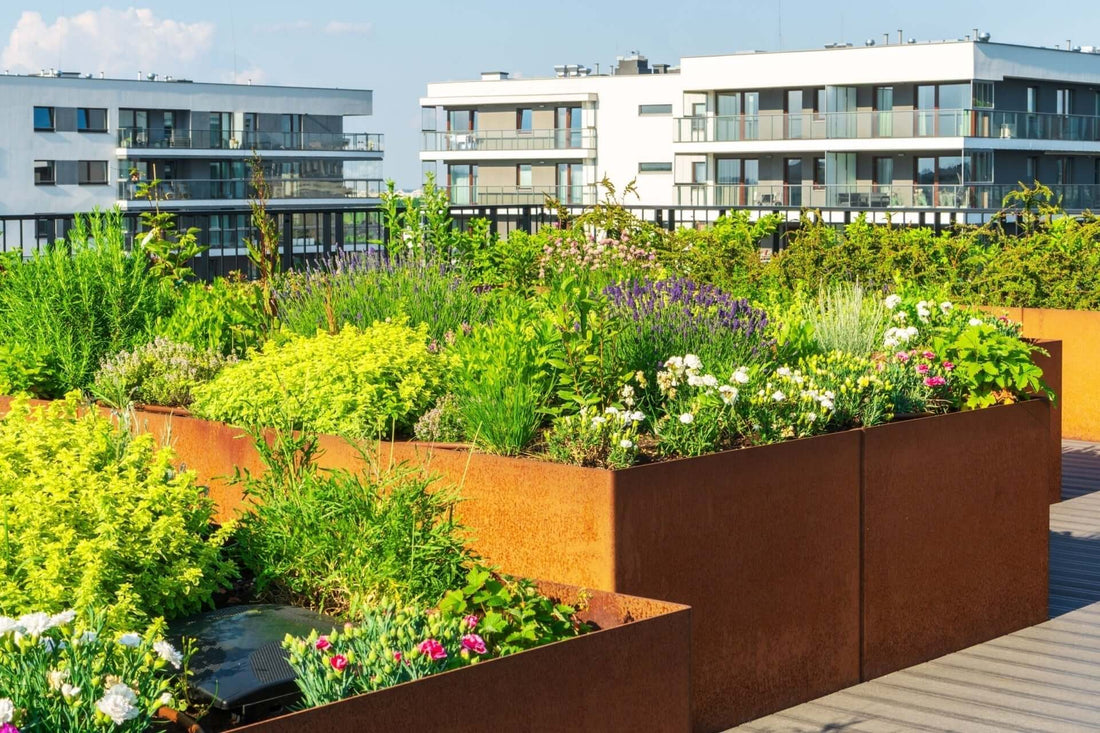
Best Native Plants for Raised Garden Beds
Share
Choosing the Best Native Plants for Raised Garden Beds
Raised garden beds create an ideal growing environment for native plants which benefits from excellent drainage properties alongside warmth protection and soil compaction prevention. Selecting plants for raised beds requires choosing native species that thrive in your local soil and climate conditions. Native plants for raised beds demand less upkeep while drawing in helpful pollinators and boosting garden biodiversity.
The deep root systems and preference for well-draining soil allow perennial plants such as purple coneflower (Echinacea purpurea) and wild bergamot (Monarda fistulosa) to prosper in raised bed gardens. The flowers supply vibrant color and garden structure as well as serve as a magnet for bees, butterflies and hummingbirds. Black-eyed Susan (Rudbeckia hirta) remains a popular choice despite its widespread use in gardens and cardinal flower (Lobelia cardinalis) performs well in damp environments.
The structural beauty of raised beds benefits from shrubs such as New Jersey tea (Ceanothus americanus) and spicebush (Lindera benzoin) which also create a vital food source for pollinators. Wild strawberries (Fragaria virginiana) serve as a superb ground cover for gardeners who want to add edible native plants to their gardens while ramps (Allium tricoccum) succeed in the partial shade of larger plants. Native selections maintain ecological health while providing both productivity and aesthetic appeal to your raised beds during the entire growing season.
Native Perennials and Shrubs for Long-Term Success in Raised Beds
Raised garden beds rely heavily on perennials and shrubs to maintain constant visual appeal and provide significant ecological advantages. The deep root systems of native perennials hold the soil in place and offer visual appeal throughout different seasons while supporting pollinator habitats. Purple lovegrass (Eragrostis spectabilis) stands out as an excellent option for raised beds because of its ornamental beauty which transforms into vibrant pinkish-purple during the fall season. The delicate texture of this plant's foliage creates dynamic movement in garden spaces and helps enhance the soil composition.
Wild columbine (Aquilegia canadensis) serves as an excellent native perennial selection for raised beds when gardeners wish to combine flowering plants with foliage. The plant displays delicate red and yellow flowers which draw hummingbirds during early spring when very few other flowers are blooming. Blue flag iris (Iris versicolor) stands out as an attractive plant that thrives in moist soils and performs well when grown in raised beds that receive continual watering.
Native shrubs such as winterberry holly (Ilex verticillata) and American beautyberry (Callicarpa americana) provide structural height while supplying food sources for wildlife. Winterberry holly has bright red berries which remain visible throughout winter and create a striking visual against dormant plants. The American beautyberry grows best in well-draining soils and brings seasonal attraction to raised bed gardens with its vibrant purple berries.
The Christmas fern (Polystichum acrostichoides) along with other native fern varieties excel in shaded raised beds. The evergreen fronds of these plants deliver continuous texture throughout the year while needing little maintenance. Solomon’s seal (Polygonatum biflorum) demonstrates adaptability through its graceful arching stems and dangling bell-shaped flowers that appear during springtime. Native perennials and shrubs enrich the aesthetic appeal of raised garden beds while promoting biodiversity.
Edible Native Plants for Productive Raised Garden Beds
Raised beds filled with edible native plants offer a superb method for establishing a sustainable garden that requires minimal upkeep while supporting human needs and wildlife. The well-aerated and nutrient-rich soil in raised beds provides perfect growing conditions for native fruiting plants and herbs which makes them highly suitable for home gardeners seeking aesthetic appeal and practical benefits.
Wild ginger (Asarum canadense) serves as an ideal edible native ground cover for raised beds because of its low profile and heart-shaped leaves that develop aromatic rhizomes. Wild ginger flourishes under shaded environments and serves as a weed suppressor while offering an alternative spice for foraging. Wild blueberries (Vaccinium angustifolium) represent another great choice that thrives in raised beds when planted in acidic soil. During spring these shrubs draw in pollinators before they produce tasty fruit in summer.
The native herbs mountain mint (Pycnanthemum tenuifolium) and anise hyssop (Agastache foeniculum) demonstrate exceptional value when grown in raised beds. The strong scent of mountain mint keeps pests away while beneficial insects are attracted to it as anise hyssop produces purple flower spikes that bees and butterflies adore. You can use both herbs to make tea which provides a practical use for your garden.
Groundnut (Apios americana) serves as both a unique and productive plant because it generates edible tubers and nitrogen-fixing vines. The plant shows optimal growth in raised beds because its roots expand without interference from competing aggressive species. Pawpaw trees (Asimina triloba) thrive in sizable raised beds or container settings while producing tropical-tasting fruit that resembles rich custard. Their large lush leaves deliver excellent shade and visual appeal even though they need a pollination partner.
Introducing native edible plants into raised garden beds establishes an ecosystem that supports people while also sustaining local wildlife. These selections provide delicious and nutritious yields all season long while requiring less maintenance effort.
